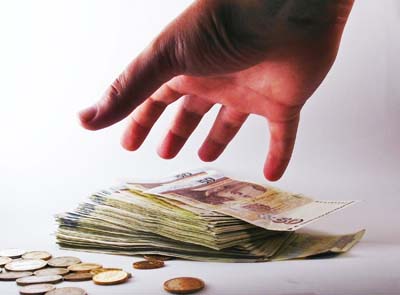South Africa has slightly improved its ranking on Transparency International’s Corruption Perceptions Index, coming in at number 61, with a score of 44.
To put this into perspective, top-rated Denmark has a score of 91, while bottom-rated Somalia scores just 8.
In Africa, Lesotho (ranked 61 with a score of 44), Ghana (ranked at 56 with a score of 47), Namibia (ranked 45 with a score of 53), Rwanda (ranked 44 with a score of 54) and Cape Verde (ranked 40 with a score of 55) all did better than South Africa.
Other African countries, however, fared worse. After South Africa, Zambia is the next country in the rankings, at 76 with a score of 38. In terms of the bigger African economies, Nigeria comes in at 136 with a score of 26; and Kenya fares even worse at number 139 with a score of 25.
According to Transparency International, this year’s Index shows that people working together can succeed in the battle against corruption. Although corruption is still rife globally, more countries improved their scores in the 2015 edition of the Corruption Perceptions Index than declined.
Overall, two-thirds of the 168 countries on the 2015 index scored below 50, on a scale from 0 (perceived to be highly corrupt) to 100 (perceived to be very clean).
Yet in places like Guatemala, Sri Lanka and Ghana, citizen activists in groups and on their own worked hard to drive out the corrupt, sending a strong message that should encourage others to take decisive action in 2016.
“Corruption can be beaten if we work together,” says José Ugaz, chair of Transparency International. “To stamp out the abuse of power, bribery and shed light on secret deals, citizens must together tell their governments they have had enough.
“The 2015 Corruption Perceptions Index clearly shows that corruption remains a blight around the world. But 2015 was also a year when people again took to the streets to protest corruption. People across the globe sent a strong signal to those in power: it is time to tackle grand corruption.”
Grand corruption is the abuse of high-level power that benefits the few at the expense of the many, and causes serious and widespread harm to individuals and society. It often goes unpunished.
Brazil was the biggest decliner in the index, falling five points and dropping 7sevenpositions to a rank of 76. The unfolding Petrobras scandal brought people into the streets in 2015 and the start of judicial process may help Brazil stop corruption.
Top performers share key characteristics: high levels of press freedom; access to budget information so the public knows where money comes from and how it is spent; high levels of integrity among people in power; and judiciaries that don’t differentiate between rich and poor, and that are truly independent from other parts of government.
In addition to conflict and war, poor governance, weak public institutions like police and the judiciary, and a lack of independence in the media characterise the lowest ranked countries.
The big decliners in the past four years include Libya, Australia, Brazil, Spain and Turkey. The big improvers include Greece, Senegal and UK.
The index covers perceptions of public sector corruption in 168 countries. It is based on expert opinions of public sector corruption. Countries’ scores can be helped by open government where the public can hold leaders to account, while a poor score is a sign of prevalent bribery, lack of punishment for corruption and public institutions that don’t respond to citizens’ needs.

